I was browsing through some catalogs the other day, and I couldn’t help but notice those dazzling jewelry fonts. You know, those elegant, luxurious typefaces that just seem to sparkle and shine like precious gems?
Well, I got totally mesmerized and decided to write an intro for an article all about these glittering and opulent fonts. Are you ready to add a touch of glamour and explore the world of jewelry fonts with me? Let’s get our bling on!
I’ve always been captivated by how certain fonts can make such a lasting impression, and jewelry fonts are no exception. They have this incredible ability to evoke a sense of luxury, refinement, and indulgence, all with just a few elegant strokes.
And the best part? There are so many different jewelry fonts out there, each with its own unique charm and sparkle. From delicate and graceful to bold and extravagant, there’s a jewelry font for every taste and occasion.
Throughout the beginning of time, jewelry has been a vital component of human life. No important occasion is regarded complete in practically all parts of the world without lovely jewelry. Jewelry has evolved to represent honor and status. It is regarded as a priceless symbol of affection and ascension.
Popular Jewelry Fonts To Use In Your Design
Try using Open Sans or Lato if you’re working on a jewelry project. Avenir, Gill Sans, Bourgeois, Neue Haas Unica, Ogg, Helios, Atacama, Roslindale, Times New Roman, and other suitable fonts for jewelry are also available.
Lato Font

The sans-serif typeface Lato Font belongs to the Humanist category. The name “Lato” is derived from “Summer,” a typeface created by Ukasz Dziedzic, a well-known designer noted for his outstanding work over the course of his career. After being made public in 2010, the font was unstoppable.
There are nine weights of the Lato typeface available, and each weight also comes in an italic form. It has a total of 18 Variants and supports the most languages, which explains why it is so widely used. Because of this, you may use this typeface across a variety of platforms, such as your website, logos, posters, banners, displays, advertisements, projects, headings, and titles. It elevates your design and gives you the ability to compete in the market.
Avenir Font
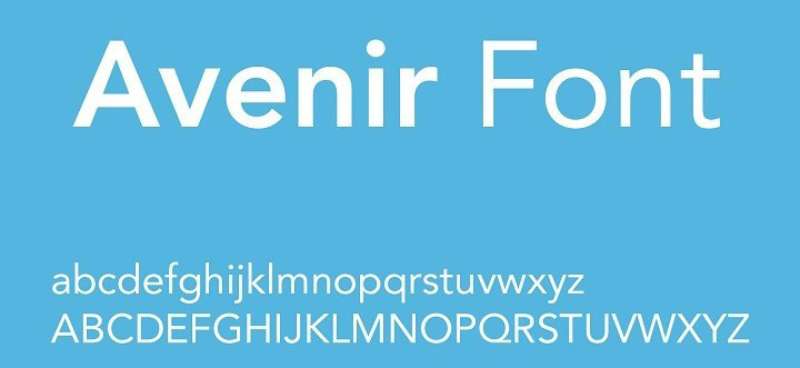
Sans-Serif typeface Avenir Font was developed in 1987 by Swiss designer Adrian Frutiger. It is regarded as one of the designer’s most beautiful creations since it has three weights, each of which has an oblique and roman variant. It primarily serves business branding purposes. For instance, in the banking industry, food firms, railroads, etc. To draw in customers, these businesses primarily use it in their logos.
Gill Sans Font
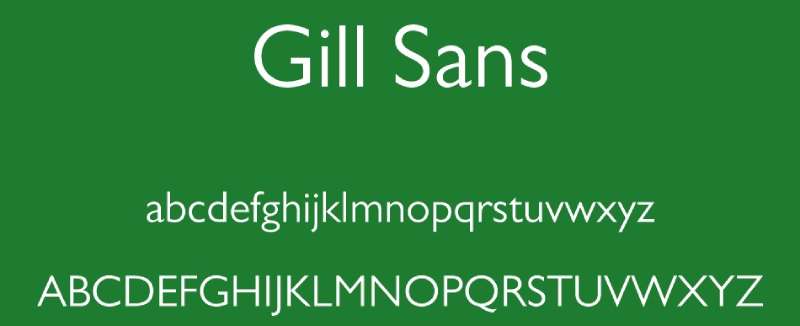
Eric Gill created and Monotype released the Gill Sans Font Family. There are 36 designs and family package options in Gill Sans. A humanist sans serif with some geometric elements in its architecture, Gill Sans. Also, it has a really British vibe.
The bolder weights create enticing display font, while the lighter weights are appropriate for text. Both are eminently comprehensible and contemporary, if occasionally joyfully eccentric. Moreover, Gill Sans is offered as a Value Pack for PC, Macintosh, or a Hybrid CD that supports both systems.
Bourgeois Font

A square geometric font called Bourgeois robs mid-century modernism and gives it a modern twist. It has a particular confidence in its voice that makes branding and identity work a great fit for it. Bourgeois is one of our most broad, adaptable, and frequently used typefaces, with 24 variants in its 2016 incarnation. The name Bourgeois refers to the social class that owns the production tools as well as the old typographic term for 9pt letterpress type.
Neue Haas Unica Font
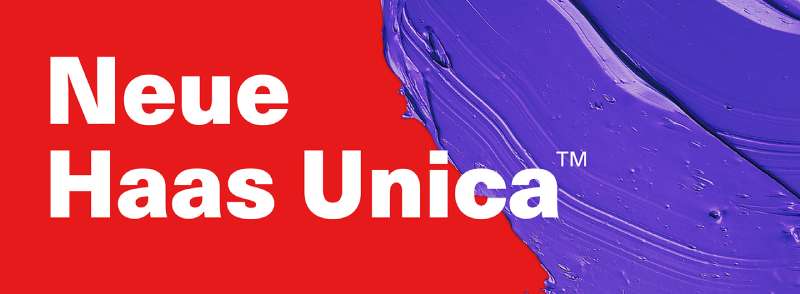
Neo-grotesque sans-serif typeface Neue Haas Unica was created by Toshi Omagari and released by Monotype in 2015. The long-forgotten Haas Unica typeface, which was created in the late 1970s but later removed off the market due to legal disputes, has been enlarged and digitally revived.
One of the original Unica’s designers, André Gürtler, calls it “cleaner than Akzidenz, warmer than Univers, and sharper than Helvetica.” Neue Haas Unica has slightly looser spacing and slightly thinner letterforms than Helvetica. Nine weights—ultra light, thin, light, standard, medium, bold, heavy, black, and extra-black—along with corresponding italic styles are offered for the family.
Ogg Font
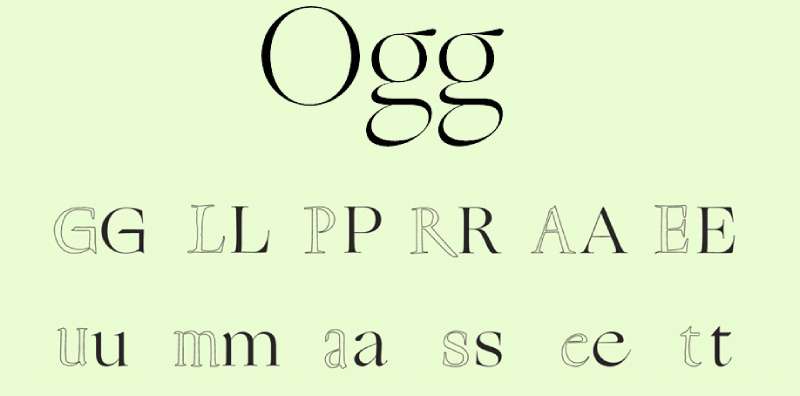
Ogg is a calligraphic serif font that Lucas Sharp created and Sharp Type released in 2012. Oscar Ogg’s hand calligraphy from the twentieth century served as the design’s primary source of inspiration. Ogg is available in italic and roman fonts.
Helios Font
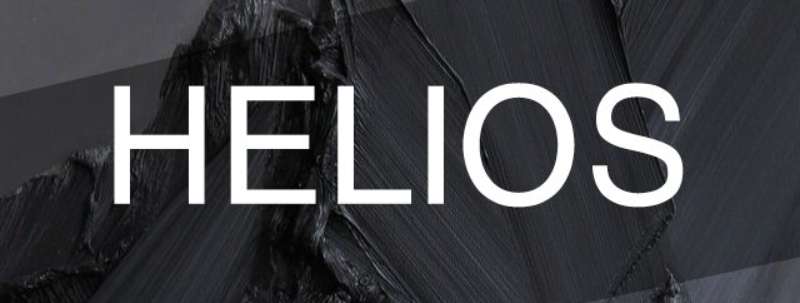
A futuristic typeface with variations for regular and rounded corners is called Helios. It uses punctuation, numbers, and uppercase letters. You can choose between some different spellings of some letters by using caps lock.
Atacama Font

The Atacama Serif Font was created for usage in lengthy writings, such those seen in books and magazines. The Swiss type designer Ian Party produced this garalde typeface, which is offered at newglyph. Using this typeface in your designs opens up a world of possibilities. It includes contrasting variations of styles ranging from “Extra Condensed Thin” to “Hyper Expanded Black”. For personal use, Atacama Serif Font is cost-free.
Roslindale Font
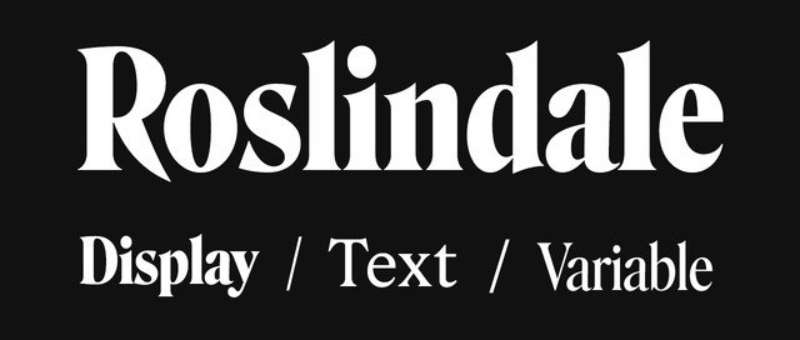
A serif typeface entitled Roslindale, which was first released in the 1890s by the Central Type Foundry, is a descendant of the well-known nineteenth-century printer De Vinne. A Victorian-inspired oldstyle with pointed, stubby serifs, bulbous terminals, and the sporadic appearance of diagonal stress.
Roslindale is an elegant and robust text; but, in display, it starts to mimic the slickness of 1970s De Vinne adaptations like ITC Bernase. The end result is occasionally a little cheesy, but it’s more like a creamy brie than a pungent bleu.
Times New Roman
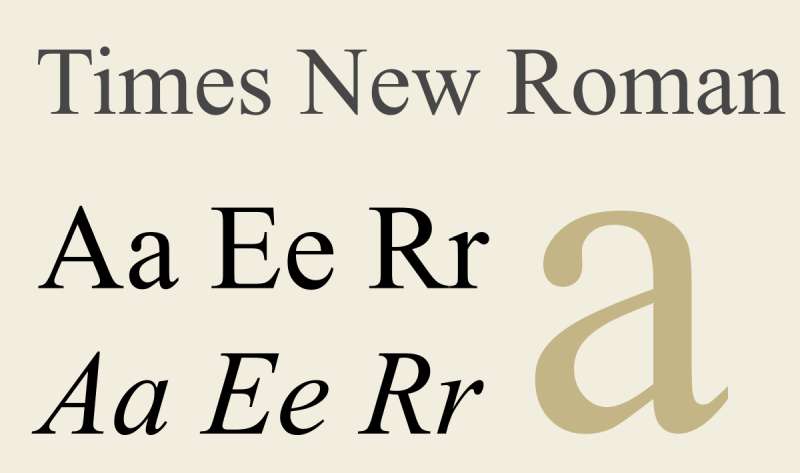
Victor Lardent and Stanley Morison created the Times New Roman font family, which was released by Monotype. There are 12 designs and family package options in Times New Roman. Imes is still very well-liked all around the world due to its adaptability and readability.
Moreover, it is a common typeface on most computers and digital printers, making it well-known as the office workhorse. For proposals, annual reports, business correspondence, periodicals, and newspapers, Times New Roman is without a doubt the greatest choice.
Arial Font
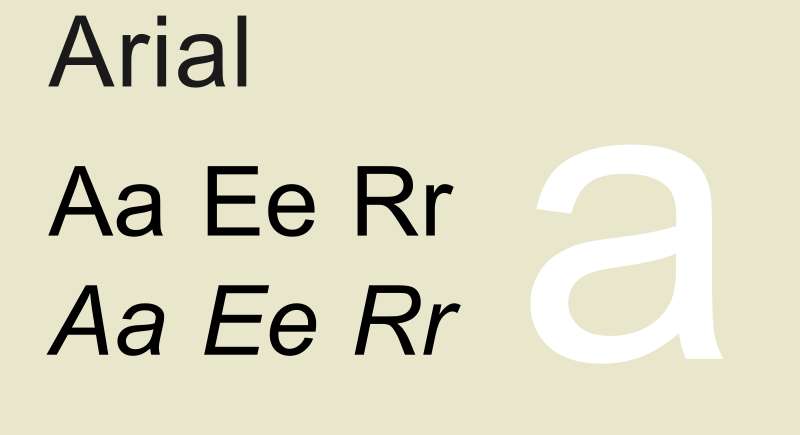
Arial Font is a Neo-grotesque-inspired sans-serif typeface. It was created by Patricia Saunders and Robin Nicholas, two well-known typeface designers who are masters in their profession. The Monotype Corporation, an American business, founded this font, which was made available to the general public in 1982.
Helvetica, another well-known Sans-serif typeface, is where it got its start and is related to it. One of the frequently used typefaces, Arial is primarily employed by well-known, large businesses. You may have seen it prominently featured on a variety of platforms and domains. It has swept the globe for all the right reasons, from being utilized in academic assignments to being used in government enterprises.
Bauhaus Font

Herbert Bayer created the Bauhaus typeface from his experimental “Universal” design, which was released in 1925. The font was developed at the German Bauhaus school and has been used for decades in logo and advertisement design.
There are numerous variants and styles of the Bauhaus font. Each style could be applied to a number of situations. Although the font has a highly distinctive look and feel, modernism and simplicity are frequently linked with it. Although it wasn’t the first sans-serif typeface, it had a significant impact on the field of design.
Gilda Display Font

Gilda Display is a font with traditional proportions that exhibits the best use of curves, strokes, and serifs. Because of its smooth transitions and great stroke contrast, this font is ideal for the fashion, jewelry, and luxury goods industries. Gilda Display generally lends all of its glitz to headlines, but due to its thoughtful design, it may also be used in lengthy texts with finer page textures.
QUESHA
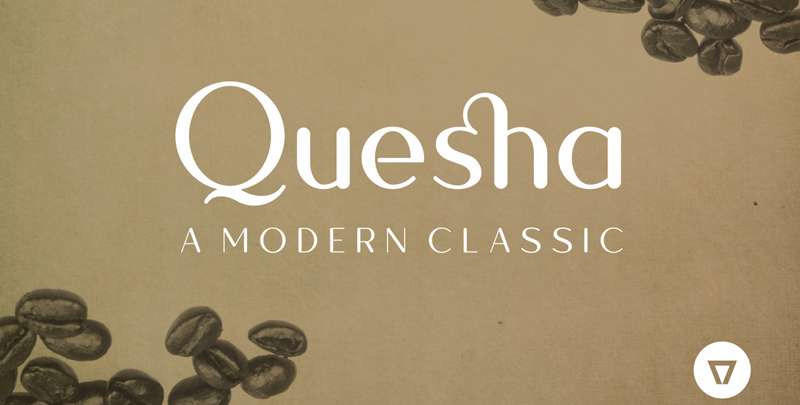
The typeface with radius Quesha is ideal for feminine designs that call for a touch of elegance. Both the capital and lowercase forms have a traditional vibe and are ideal for lifestyle magazines or jewelry brands. Nima Visual’s Quesh design would look amazing on a business card or as a logo.
Golden Jewelry Font
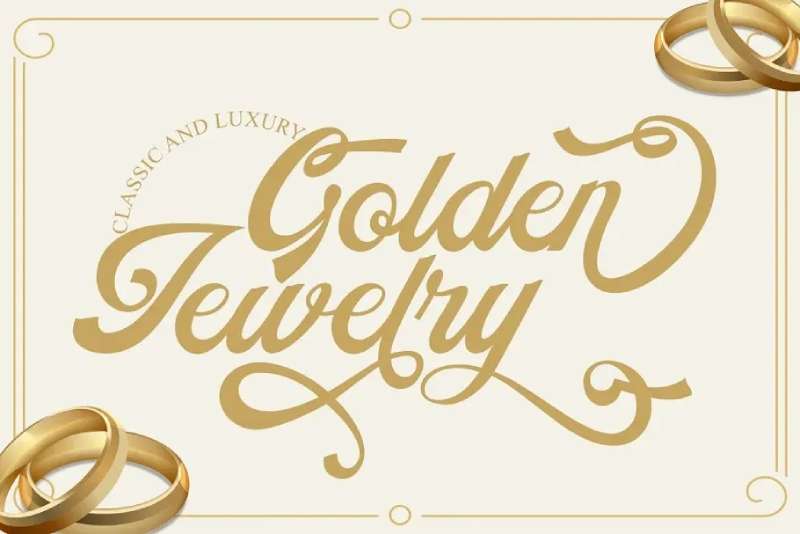
The calligraphic script typeface Golden Jewelry Calligraphy comes with lovely variant characters. A handwritten calligraphy alloy on a copper plate. This typeface was inspired by beautiful calligraphy for weddings, trendy minimal logo designs, and delicate inky hand lettering.
Golden jewelry is harmoniously crafted, making it ideal for wedding media, book covers, greeting cards, logos, branding, business cards, certificates, and almost any creative task that calls for a formal, traditional, or opulent aesthetic.
Afrah Font

Afrah captures the senses of those who adore increasing the experience of a brand with its elegantly lean, slender appearance and distinctive style. c Brands across numerous specialist areas, ranging from jewelry to lifestyle, chose Afrah to symbolize what they stand for. The font’s distinctive quality is a result of the lines’ strong thickness contrast and smooth strokes.
Afrah Serif Font Family Pack is a lovely serif font that comes with 5 different weights. It contains all fundamental non-English glyphs.
FAQ about jewelry fonts
What are jewelry fonts?
Jewelry designers frequently utilise jewelry fonts, a type of typography, to produce individualised and distinctive lettering styles. These fonts frequently include flourishes, loops, and curves that are reminiscent of classic jewelry designs and have an exquisite and extravagant appearance.
What makes a font a “jewelry font”?
A jewelry typeface is often distinguished by its elaborate and ornamental style, which frequently consists of components like swirls, loops, and flourishes. These typefaces may have been influenced by calligraphy or other elaborate lettering styles, and they are frequently created to resemble the appearance of traditional jewelry.
What are some popular jewelry fonts?
Monotype Corsiva, Edwardian Script, P22 Corinthia, and French Script MT are a few of the often used typefaces for jewelry. These typefaces are preferred for jewelry design projects because of their reputation for elaborate and elegant designs.
Can jewelry fonts be used for anything other than jewelry design?
Jewelry fonts can be used for a variety of other design tasks, despite the fact that they are frequently linked to jewelry creation. These fonts may lend a touch of class and elegance to any design project and can be used in branding, print design, web design, and more.
How do I choose the right jewelry font for my design?
When selecting a typeface for your jewelry design project, take into account the overall style and tone of your design as well as the font’s readability and legibility. Search for a typeface that boosts your design’s overall aesthetic appeal and goes well with it.
Are there any free jewelry fonts available?
Absolutely, you can utilise a variety of free jewelry fonts that are available online in your design work. Popular free options include Cristalina Script, Alinquent, and Angel Tears.
Can I create my own jewelry font?
Absolutely, you can make your own jewelry typeface using programmes like FontLab or Glyphs. It can take a lot of time, but the process of developing each letter and character of the typeface is satisfying.
What file formats are jewelry fonts available in?
TrueType (.ttf), OpenType (.otf), and PostScript are among the file types commonly used for jewelry fonts (.ps). Other font formats, including SVG or WOFF, might potentially be accessible.
Can I use jewelry fonts for commercial purposes?
Absolutely, the majority of jewelry typefaces can be used for business purposes as long as the proper licencing and rights have been obtained. Be sure you are using the font legally by reviewing the licencing conditions of the font you are using.
How do I install and use jewelry fonts in my design software?
Simply download the font file, then use your computer’s font management programme to install the jewelry font on your system. After installing the font, you can use it in any design programme that accepts custom fonts, including Adobe Photoshop and Illustrator.
Ending thoughts on jewelry fonts
Browse the beautiful jewelry fonts above to find the ideal match for your upcoming web and print design projects of all sizes.
Nothing compares to the joy of discovering a new necklace or pair of earrings when you open a jewelry box. You need a jewelry logo that shines just as brightly as your designs if you want to generate excitement before people even learn what’s inside the boxes of your jewelry company.
If you enjoyed reading this article about jewelry fonts, you should read these as well:
- Google font pairings and combinations that look good
- Awesome Jewelry Website Designs to Use as an Example
- Cool feminine fonts to download and use in your projects
The post Jewelry Fonts That Can Add Character to Your Design appeared first on Design Your Way.
Source: https://ift.tt/qJ0K4kc

No comments:
Post a Comment